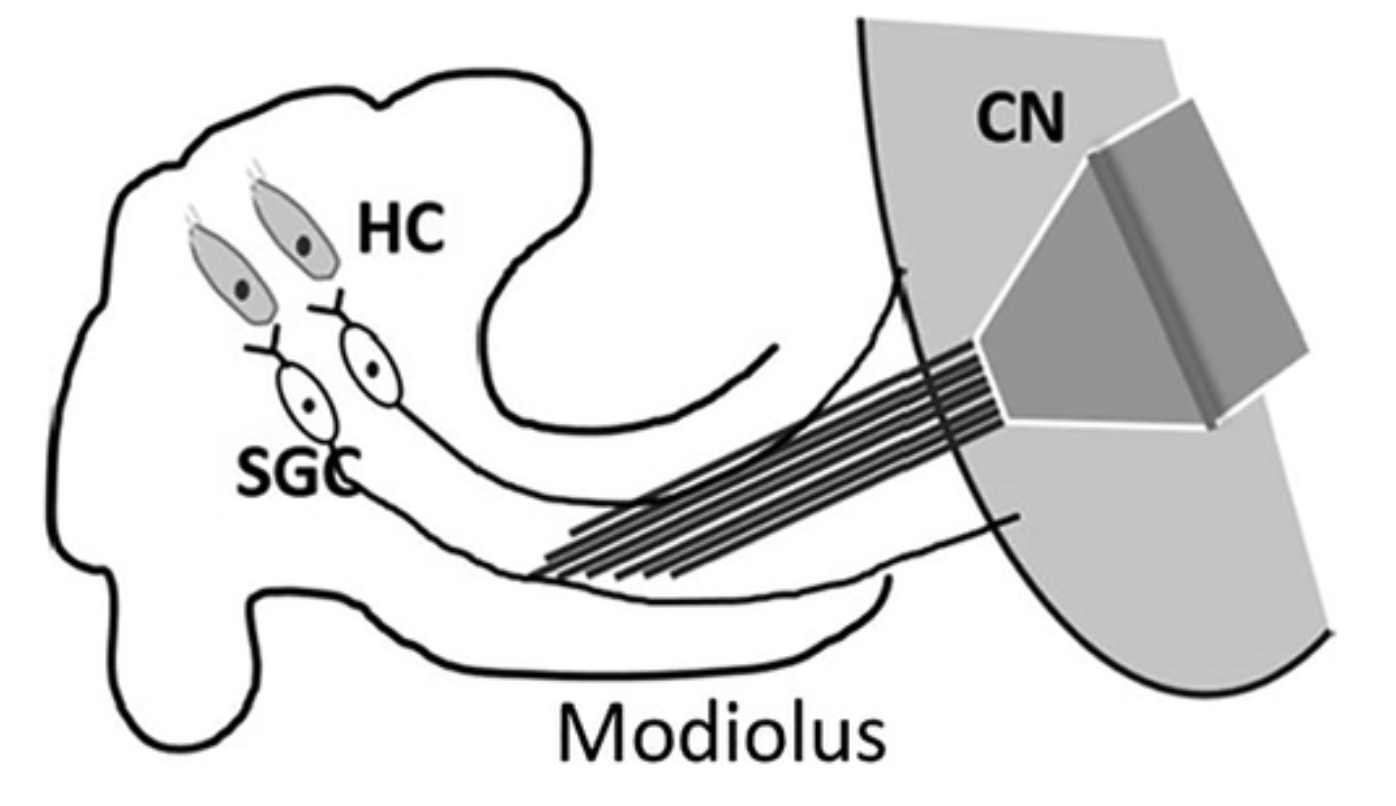By Hao Luo, M.D., Ph.D.
Neural information travels among multiple areas in the brain, which has been of great interest in the field of neurocomputation, and several computational methodologies have been developed and applied to measure the neural information flow.
Measurement of the information flow along the ascending auditory pathway from the periphery to the auditory cortex (AC) has been given much attention in neurocomputation. While the neurophysiological mechanisms of the auditory pathway have been well studied, the temporal resolution and relationships among the auditory centers are still under investigation, especially when suffering from acoustic trauma that results in peripheral deficits and signal changes in the auditory system.
This is an illustration of cochlear implantation via the modiolus approach used in the rat model for this study. HC: hair cell. SGC: spiral ganglion cell. CN: cochlear nucleus. Credit: Luo et al/Measurement and Control
In our study published in the journal Measurement and Control in April 2022, by chronically implanting the electrodes in the auditory nerve (modiolus approach) and auditory cortex, we measured rat auditory cortex (AC) neurons and auditory nerve (AN) signals in a digital format by using two new algorithms to calculate the neural response time of the AC neurons to electrical stimulation of the AN and quantify the neural information flow in the temporal domain.
The proposed algorithms could provide a clue on the signal response and its shifts in the AC during the development of hyperactivity, a neural mechanism of tinnitus, and lead to an in-depth understanding of the information flow inside the auditory pathway. This will help us to better understand the mechanisms of tinnitus.
One algorithm compared the time differences of neural spikes directly, which was based on the conventional idea of the spike train in neurocomputation. The other employed a modified cross-correlation algorithm.
To test the effectiveness of the proposed method, the time difference of the AC to AN was calculated by both algorithms with raw neural signals collected. The animals had measurements before and after noise trauma, and one of the animals received intra-modiolus electrical stimulation (IMES) to stimulate the AN. As a proof-of-concept study, the consistent results from using these two algorithms support quantifying AC time delays to AN stimulation, which could interpret temporal information processing along the auditory pathway.
For future work, a larger sample size of animals will be used and multichannel neural signals will be simultaneously collected in the AC and other areas of the brain, allowing us to develop a more complete measurement system to analyze the temporal relations along the auditory pathways.
Together, the temporal relation and correlation would provide a clearer view of the neural information flow that will better our understanding of the mechanism of tinnitus-related neural activities in auditory brain structures.
2019 Emerging Research Grant scientist Hao Luo, M.D., Ph.D., is an instructor at Henry Ford Health System in Detroit. His grant was generously funded by Royal Arch Research Assistance.









The squirrels’ improved ability to hear low frequency sounds is likely a sensory adaptation to life at high elevations, where weather and thin air can reduce how well sound travels. The study highlights how hearing and behavior can evolve together to help animals survive in challenging acoustic environments.